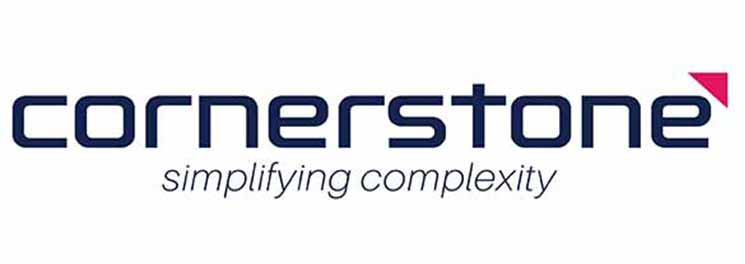
IBP: Bridging the gap between strategic and tactical planning
Thanks to its monthly review process, integrated business planning (IBP) provides early warnings of potential gaps, allowing for timely corrective actions through scenario modeling.
Integrated business planning (IBP) is gaining traction in Finance and Operational departments for an array of reasons. A well-orchestrated IBP process can have a positive impact on EBITDA, balance sheet, cash flow, customer service levels and overall productivity – all while keeping the nasties to a minimum (freight costs, capital intensity, delivery penalties and missed sales).
There’s another benefit of IBP worth exploring in greater detail – its unique ability to bridge the gap between “top-down” and “bottom-up” planning. While it’s harder to assign a quantitative outcome to this particular benefit, it’s a critical tool to ensure alignment between the corporate agenda at the leadership table (the longer-term strategic plan and goals), versus what is actually happening on the ground at any given point in time (tactical execution).
And perhaps most critically of all, IBP supports your understanding of what is likely to happen in the mid-term, particularly over a 6-12 month horizon – thus, giving you the opportunity to correct course if any gaps are looming.
What do we mean by IBP gaps?
IBP is a monthly process, which means it offers a month-to-month view of your company’s aspirational or strategic targets, versus how you’re actually performing. It creates a view of the medium-to-long term outlook; and helps identify the gaps you’re likely to encounter between then and now.
The metrics you prioritise in the IBP process may vary slightly depending on what you’re looking to achieve, but in general the headline metric will be a measure of the company’s financial and operating performance (EBITDA or a variation of it).
It doesn’t matter which part of the business you’re from – whether Finance, Supply Chain, Marketing, Sales or IT – with IBP, your focus must be that financial outcome. This may even be enshrined in departmental or individual KPIs. Financial targets will become the common language of the business, with the common understanding that it is the most important metric to demonstrate ROI to shareholders.
Occasionally, there will be a gap between what you need to deliver (strategic targets) and what you’re on track to deliver (monthly forecast). Because IBP enables you to identify those gaps with early warning, you may have significant notice to mitigate the gap.
IBP’s capability to model various “what if” scenarios can be useful as you identify strategies to close any gaps. Tools can accelerate this process – although clean, accurate data is the fundamental ingredient.
For example, let’s say your financial targets are tracking 10% below budget for September, and it’s now March. Your IBP system will allow you to see the likely impact of a range of mitigation measures, from the heavy-handed (what will be the impact if I close this manufacturing facility?) to something lighter (what will be the impact of a major marketing campaign? What if I run a promotion on a certain product line?).
No matter which corrective action you decide to take, there’s ample time to plan and execute it properly, rather than making hurried decisions, which may hurt you in the longer term. If it can be managed easily, it should already be dealt with before it even comes to the Finance Review stage of IBP (see here for an explanation of the different stages of the IBP process).
Bracing for (and embracing) the gap
Let’s face it: No one wants to discover a looming gap. Your first reaction might be anything from mild annoyance (if you know it can be managed fairly easily), to some version of a mini grief cycle, with all the associated and well-documented emotions (denial, anger, bargaining, depression… and so on). We’re not being entirely flippant, either – workplace decisions that have a major impact can most certainly trigger feelings akin to grief in the humans involved.
If you’re experiencing anything close to the latter, our best advice is to do all you can not to get stuck in early-stage grief. Particularly not denial – the data demonstrates that your gap isn’t going anywhere and ignoring it won’t make it so.
Instead, move as quickly as you can to the feeling that marks the end of any mourning period – acceptance. Rather than feeling that you’re about to topple over the edge of a looming cliff, and bracing yourself for the subsequent impact, it’s important to realise that no enterprise experiences smooth sailing all the time.
One of the core tenets of IBP is to not only accept but embrace the approaching gap. You may even be able to turn a looming gap into a budding opportunity – but you’ll only uncover that opportunity if you face the risk head-on and continue to collaborate on a solution.
It’s an approach known as risk and opportunity (R&O) modelling – and it will prove to be one of the most effective tools in your IBP arsenal if you learn to embrace it.
Close the gaps with a smile
IBP will help to align your organisation’s strategic intentions with on-the-ground actions, as well as turn potential challenges into opportunities for growth. The result is an enterprise that is completely aligned with a common goal – namely, financial and operational success.
So, let’s embrace those gaps with a smile, shall we? After all, they may be the beginning of your next success story.
We are enablers of change and transformation in Supply Chain, Information Management, Financial Planning & Analytics, Management Consulting, Project Management, and Managed Application Services. Contact us to find out more about how we work with your teams or call 1300 841 048.





